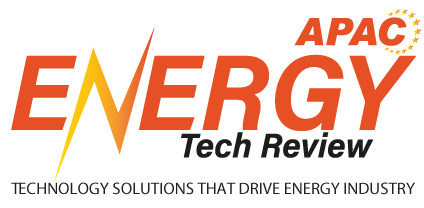CLOSE
Specials
I agree We use cookies on this website to enhance your user experience. By clicking any link on this page you are giving your consent for us to set cookies. More info
Be first to read the latest tech news, Industry Leader's Insights, and CIO interviews of medium and large enterprises exclusively from Energy Tech Review
Thank you for Subscribing
The Future of Solar Technology: Advancements and Trends
Solar technology has come a long way, as the first solar cell was invented in 1954.

By
Energy Tech Review | Tuesday, May 30, 2023
Stay ahead of the industry with exclusive feature stories on the top companies, expert insights and the latest news delivered straight to your inbox. Subscribe today.
One of the key advancements in solar technology is the development of more efficient solar cells.
FREMONT, CA: Solar technology has come a long way, as the first solar cell was invented in 1954. Today, solar power is a rapidly growing industry that is changing how we think about energy production and consumption. With technological advancements and increased efficiency, solar energy is becoming more accessible and affordable for businesses and consumers worldwide.
One of the key advancements in solar technology is the development of more efficient solar cells. The efficiency of solar cells determines how much electricity can be generated from a given amount of sunlight. In recent years, there have been substantial improvements in solar cell efficiency, with some new technologies boasting efficiency rates of over 40%. This means more electricity can be generated from the same amount of sunlight, making solar power more cost-effective and accessible.
Another trend in solar technology is the development of more durable and flexible solar panels. Traditional solar panels are rigid and require a flat surface for installation. However, new materials and manufacturing techniques have made it possible to create flexible solar panels that can be installed on curved or uneven surfaces. This makes installing solar panels in various settings easier, including on rooftops, walls, and even clothing.
The inclusion of solar power with other technologies is also becoming more common. For example, solar panels can be combined with energy storage systems, such as batteries, to provide a reliable and consistent power source. This is particularly important for businesses and consumers who want to lessen their reliance on the grid and increase their energy independence. Additionally, solar power can be integrated with smart home technology to optimize energy usage and reduce waste.
Artificial intelligence (AI) and machine learning (ML) are also becoming more common in solar technology. These technologies can be used to optimize the performance of solar panels and predict future energy production. By analyzing weather patterns and energy usage data, AI and ML can help ensure that solar panels are working at their highest efficiency and that energy production is optimized.
Finally, the use of solar power in transportation is also gaining momentum. Solar-powered electric vehicles (EVs) are becoming more common, with some models featuring solar panels on their roofs to provide additional power. This can help to reduce the energy needed to charge EVs and increase their range, making them more practical for everyday use.
Irrespective of these advancements, there are still challenges to the widespread adoption of solar technology. One of the greatest challenges is the need for continued investment in research and development to improve solar panels' efficiency and cost-effectiveness. This includes not only the development of new materials and manufacturing techniques but also the optimization of installation and maintenance processes.
Another challenge is the need for supportive policies and regulatory frameworks to help create a level playing field for solar technology. This includes policies that encourage investment in solar infrastructure, such as tax credits, subsidies, and feed-in tariffs. It also includes regulations that promote energy efficiency, energy conservation, and the integration of solar power into the existing energy system.
In conclusion, the future of solar technology is bright, with advancements in efficiency, durability, integration with other technologies, and AI and ML optimization. These trends make solar power more accessible and affordable for businesses and consumers worldwide. However, continued investment in research and development, as well as supportive policies and regulatory frameworks, will be necessary to ensure that solar technology can reach its full potential and play a key role in transitioning to a more sustainable and resilient energy system.

Copyright © 2025 Energy Tech Review. All rights reserved






